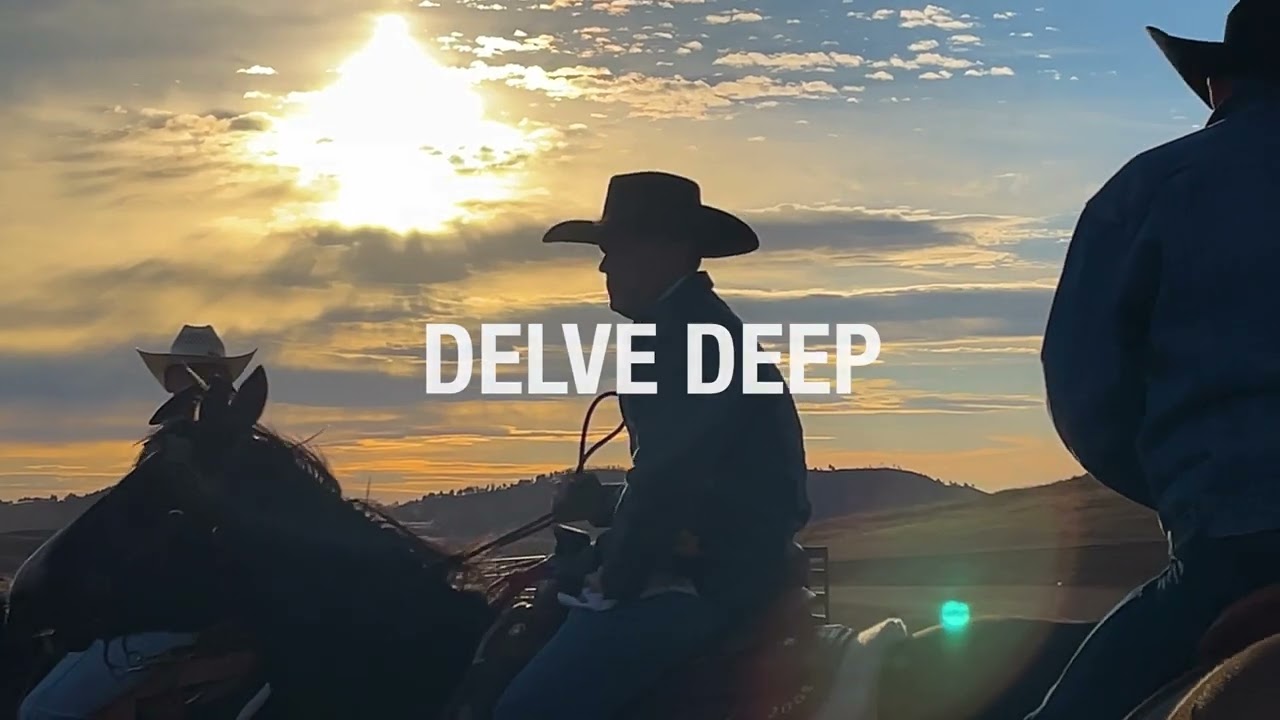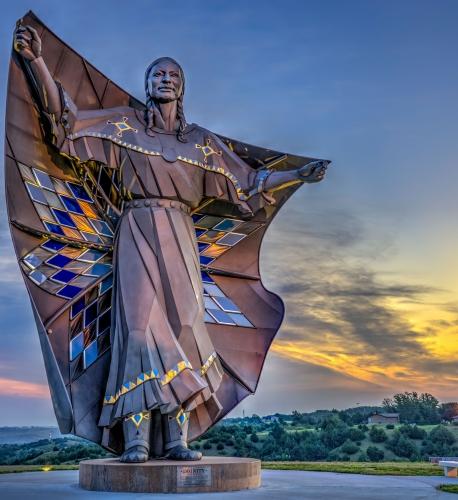Episode 1: The Fall and Rise of the Buffalo
Immerse yourself in the intensity and revelry of the roundup! Join host Brian Thacker in an intensive 39-minute exploration featuring organizers and crew discussing the Custer State Park Buffalo Roundup's history and importance. Plus, Bear Butte State Park's Jim Jandreau gives enlightening info on what the buffalo mean to the state's Indigenous people.
You'll hear from:
- Matt Snyder, superintendent of Custer State Park
- Lydia Austin, visitor services manager of Custer State Park
- Kobee Stalder, former visitor services manager of Custer State Park
- Jim Jandreau, manager of Bear Butte State Park
- Riders and spectators of the Custer State Park Buffalo Roundup


Check out the trailer now!
Custer State Park Buffalo Roundup
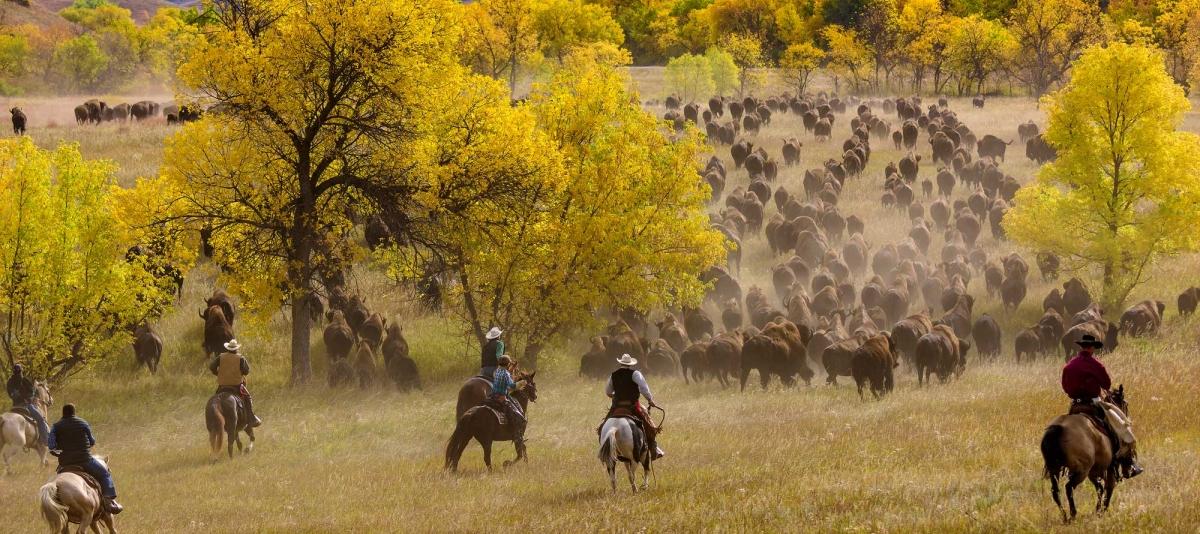
Ready to saddle up and see the Roundup with your own eyes? Mark your calendar for the last Friday in September. The event is free and open to the public. Adding to the festivities is the Arts Festival, held Thursday through Saturday, where you'll find hundreds of local and regional vendors selling handmade creations.
Immerse yourself in the intensity and revelry of the roundup! Join host Brian Thacker in...
Create Lasting Memories at Wind Cave National Park
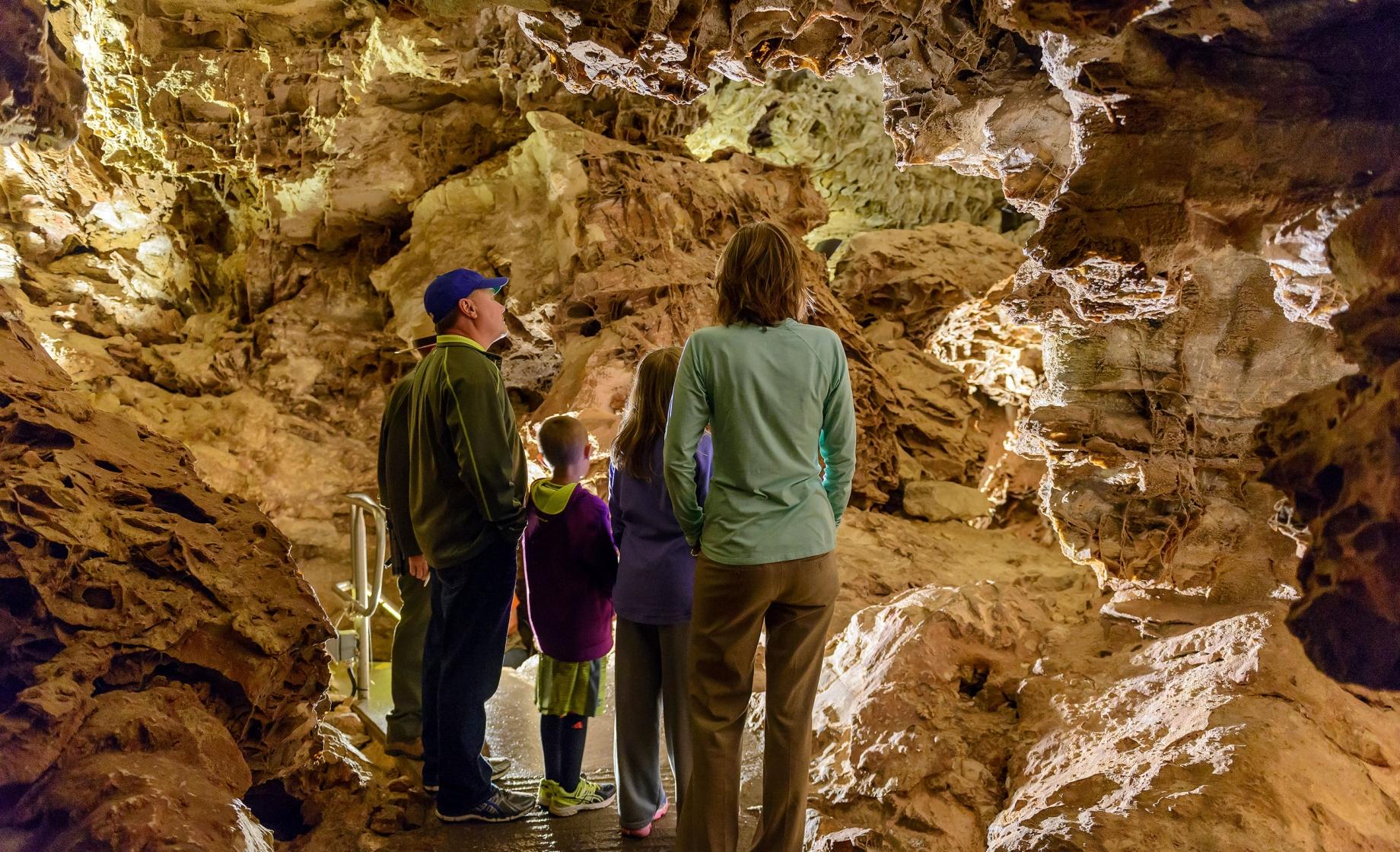
Experience awe-inspiring landscapes and ancient wonders deep inside the earth at one of America’s oldest national parks. Wind Cave National Park is one of the world's oldest and most complex caves, and the surrounding prairie grasslands and forested hillsides are home to bison, elk, coyotes, mountain lions and plenty of other wildlife. It all combines to make the ideal oasis for those searching for natural peace and beauty.
Wind Cave isn’t just a national park. It’s an opportunity to explore two worlds while reconnecting with yourself and nature.


Wind Cave National Park Visitor Center
When you arrive at the park, the visitor center is a great first stop. Explore the exhibit rooms to learn about the history of the cave and surrounding prairie grasslands and get all the information you need on cave tours, exhibits, maps, backcountry permits and more. Wind Cave Visitor Center is open from 8 a.m. to 4:30 p.m. all year except on Thanksgiving, Christmas and New Year’s Day, with expanded hours in the summer.
Note: Do not use your GPS to find the visitor center — you are likely to get lost. Find directions here.
Wind Cave Tickets & Tours
Access to the cave is only available via tours from the Wind Cave Visitor Center. Advance reservations for specialized tours like the Garden of Eden, Natural Entrance and Fairgrounds tours are recommended. For more info on tours, keep reading or click here.
Entrance to the park is free, but you must purchase tickets for the cave tours ahead of time. Tickets for other tours are available on a first-come, first-served basis on the tour day. Due to high demand, long waits are common for in-person ticket sales during spring, summer and fall, and tours often sell out 1-2 hours in advance and may be sold out for the day by mid-afternoon.
Garden of Eden Tour (1 hour, ¼ mile, 150 stairs)
This is the easiest of the tours, offering a chance to appreciate the delicate and intricate beauty of cave popcorn, boxwork and flowstone. It’s ideal for first-timers or those with limited time or mobility.
Natural Entrance Tour (1.25 hours, 2/3 mile, 300 stairs)
See the cave’s natural entrance — and largest opening — as you journey to the cave’s middle. You’ll see plenty of the boxwork Wind Cave is known for on this moderately strenuous tour that’s ideal for families.
Fairgrounds Tour (1.5 hours, 2/3 mile, 450 stairs)
Experience upper and middle levels of Wind Cave on this tour that will show stalactites, stalagmites, abundant boxwork and large rooms full of popcorn and frostwork formations. This is the most strenuous of the tours, but perhaps also the most rewarding.
Accessibility Tour (30 minutes, 100 feet, 0 stairs)
This tour is perfect for those in wheelchairs or with limited mobility. An elevator takes you in and out of the cave, and you’ll see the cave’s signature boxwork.
Candlelight Tour (summer only, 2 hours, 2/3 mile, 424 stairs)
See the cave as the first explorers did! In the soft glow of candle lanterns, you’ll explore paved and natural cave surfaces. Make sure to wear long, hole-free pants and fully enclosed, lace-up footwear. That means no open-toed shoes, cowboy boots or sandals. All participants must be 8 or older. Limited to 10 people, the tour does not permit photography. Reservations are required.
Wild Cave Tour (summer only, 4 hours, 2/3 mile)
The adventurous and physically fit can don helmets, kneepads and headlamps for a rare look at an undeveloped portion of the cave. Limited to 10 people with a minimum age of 16, you must have long, hole-free pants, a long or short sleeve shirt and sturdy lace-up footwear with tread. Be ready to fit through a space 10 inches by 3 feet and prepare to crawl as you explore just like a caver!
For more info on tours, click here.

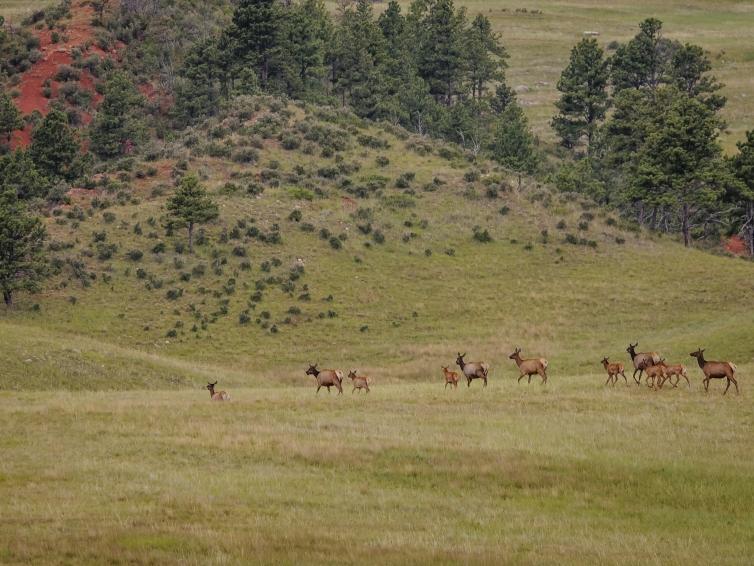
When to Visit
Spring, summer and fall can be busy, with long waits and tours selling out by midday. While there is less demand for tours in winter, it’s still best to arrive well ahead of your desired tour time to secure your spot. No matter what season you decide to visit, we always recommend booking tours in advance to guarantee cave access. Don’t forget to check road conditions and the weather as you plan your cave adventure.
Wind Cave Weather
For the most comfortable and temperate weather, visit Wind Cave National Park in spring or fall. Spring and fall days at the park vary from sunny and warm to cool, rainy and windy. Summertime brings warm daytime temperatures in the high 80s and cool evenings in the low to mid-50s. The average winter snowfall is 30 inches, with daytime averages in the low 40s and evening temperatures falling below freezing.
Places to Stay Near Wind Cave
Whether you want to stay in a hotel, rent a cabin or camp, there are plenty of lodging options near Wind Cave National Park. Elk Mountain Campground is the only campground inside the park and is open year-round, but there are numerous campgrounds and cabins throughout the surrounding Black Hills National Forest.

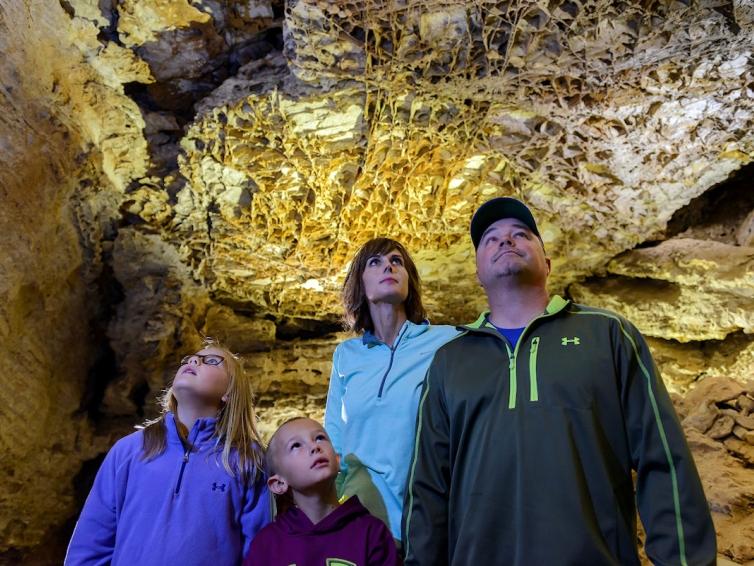
Explore Responsibly
We want to keep Wind Cave National Park in great shape so visitors can enjoy its natural splendor for decades. You can do your part by following some simple guidelines for responsible recreation and fun. Learn about sustainable travel in South Dakota.
Follow Cave Rules
Visiting Wind Cave is an experience you’ll remember for the rest of your life. Remember: This is one of the longest caves in the world, so always stay with your tour group and never wander off alone. Wind Cave is also one of the oldest caves in the world, with some parts of the cave dating back over 300 million years. Never touch natural cave formations or crystals, as oils from our hands can permanently damage them. Touching or leaning against rocks in the cave disrupts lava flow and will hinder future crystal growth. Read more about rules and safety info at Wind Cave National Park.
Respect All Wildlife
In 1913, the American Bison Society donated 14 bison to Wind Cave National Park with the goal of establishing a free-ranging herd within the park. Originating from the New York Zoological Society's herd in the Bronx Zoo, the bison were released into the park to roam freely in a natural setting. As a result, Wind Cave National Park offers a rare and fascinating combination of cave tours and wildlife viewing in a diverse ecosystem. The park is home to a wide variety of wildlife, including mammals like bison, elk, prairie dogs, deer, mountain lions, coyotes and various species of birds, reptiles and amphibians. Appreciate these extraordinary creatures, but always do so from a safe distance. They are wild animals and can be unpredictable, especially bison, mountain lions and coyotes. Never feed any wild animals or approach them.
Obey Road Signs & Drive Carefully
Always follow speed limits and road rules, no matter the season. These rules protect you and the park wildlife. Off-roading in cars or bicycles is strictly prohibited, so stick to the trails. Exercise extreme caution and common sense when visiting the park during wintertime. Snowy, icy weather makes for poor visibility and potentially dangerous road conditions, especially when bison crowd the roads at night.
Look Out For Poison Ivy
Avoid that itch! Poison ivy is common throughout the park and its hiking trails. It usually hangs low to the ground in moist areas but can sometimes appear as a hairy vine. You can identify poison ivy by its three distinctive, jagged, shiny leaves. Wear long pants and fully enclosed socks and shoes when hiking through the park to avoid accidental contact with the plant.
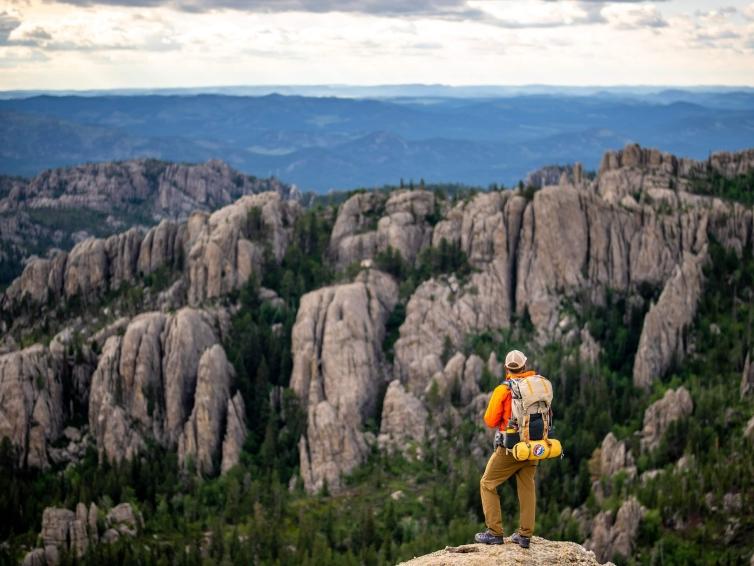

Nearby Attractions
Wind Cave National Park offers quick access to the rest of South Dakota’s Great 8, from short drives to half-day trips. But the adventure doesn’t stop with the Great 8. Check out this list of activities and attractions just outside the park in Custer and Hot Springs..
Distance to the Other Great 8 Landmarks:
Custer State Park: 9-minute drive north
Jewel Cave National Monument: 32-minute drive northwest
Crazy Horse Memorial®: 36-minute drive northwest
Mount Rushmore National Memorial: 1 hour drive north
Badlands National Park: 1 hour, 13-minute drive northeast
Historic Deadwood:1 hour, 31-minute drive northwest
Missouri River: 3 hour, 25-minute drive east
Things to Do Near Wind Cave
Experience awe-inspiring landscapes and ancient wonders deep inside the earth at one of America’s oldest...
Chute Rooster
Hill City's Chute Rooster is the Black Hills' original honky tonk and restaurant, serving American Country/Southwest cuisine with a side of authentic Western American history. Eat, drink, and get western at our 125-year-old iconic property - listed on the National Register of Historic Places -
Experience The Wonders of Jewel Cave National Monument
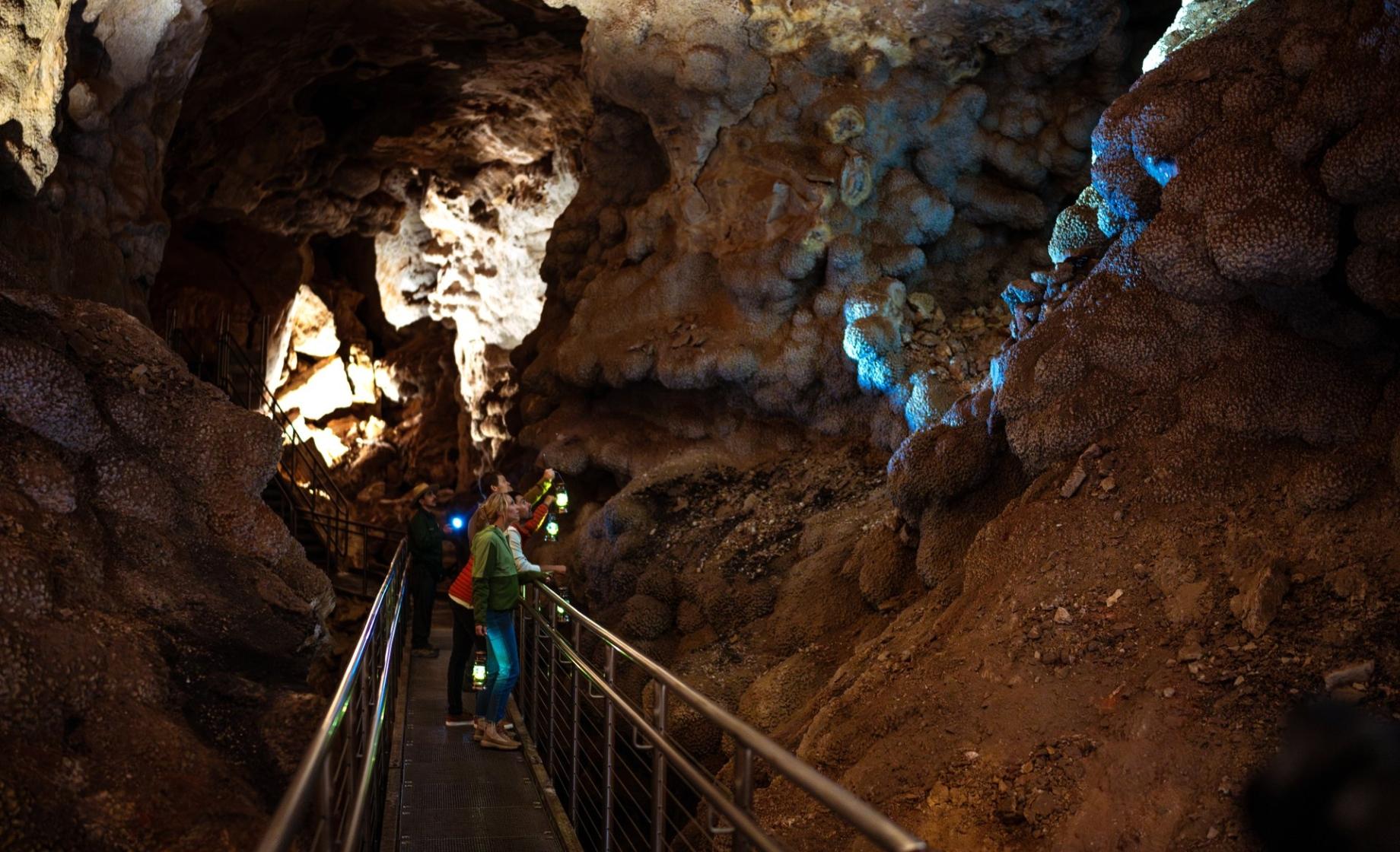
Behold some of the world’s most impressive caves in South Dakota's Black Hills! Located within Jewel Cave National Monument, Jewel Cave is the third-largest cave in the world, filled with miles of underground passages and natural calcite crystals and formations. Pair that with miles of rolling prairie grasslands and lush forests on the surface, and you have an awe-inspiring experience you won’t get anywhere else.


Jewel Cave National Monument Visitor Center
As you prepare for your Jewel Cave adventure, the Visitor Center is a perfect first stop. Come check out the bookstore and exhibits of cave formations and explorations, get cave tour information, and book your tour tickets. The Visitor Center, park store, surface trails and picnic areas are open daily from 9:30 a.m. to 4:30 p.m. MST. Visitor Center hours are subject to change due to staffing, inclement weather, emergencies, construction and special events.
Jewel Cave Tickets & Tours
Don’t miss out! Due to high visitation, cave tours often sell out two to three hours in advance and may sell out for the entire day by midday. Walk-up tickets aren’t guaranteed, so we recommend you purchase tickets in advance via Recreation.gov. A credit or debit card is required for on-site payments for cave tours, campground fees and Interagency Passes at Jewel Cave National Monument Visitor Center. Guided tours (Scenic Tour, Historic Lantern Tour and Discovery Tour) are required to explore the Jewel Cave, and all tours are weather-dependent and may be delayed or canceled due to inclement weather. The Jewel Cave Historic Area and Historic Lantern Tours close at the end of October and start again the following summer season.
When to Visit
All cave tours are available from late May to early September. Only the Scenic and Discovery tours are available for the rest of the year, an excellent off-season option for those looking for smaller crowds. Regardless of the time of year, you must make a reservation to tour the cave. The Visitor Center is open year-round, although hours vary depending on the time of year. Surrounding hiking areas are open throughout the winter. Trail guides are available at the Visitor Center and the Jewel Cave Historic Area during the summer. If you want to hike during winter, you can rent snowshoes at the Visitor Center.
Jewel Cave Weather
Visit Jewel Cave in late spring/early summer or fall for the most comfortable weather. Spring and fall days vary from sunny and warm to cool, rainy and windy. Summertime brings warm daytime temperatures in the high 80s and cool evenings in the low to mid-50s. In winter, daytime temperatures average in the low 40s, with evening temperatures falling below freezing. Visit the National Park Service website for more detailed weather info.
Places to Stay Near Jewel Cave
After a day exploring the cave and hiking, you deserve a comfortable, cozy place to rest and recharge. Whether you want to camp, glamp, rent a cabin or stay in a hotel, there are numerous lodging options near Jewel Cave National Monument.

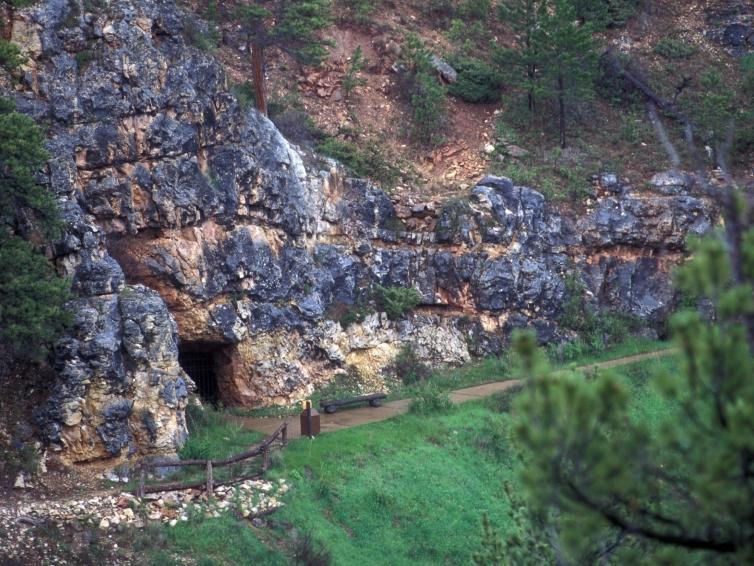
Explore Responsibly
Embrace the spirit of Forever 605 by following safety rules, respecting wildlife and plants, sticking to designated trails, and leaving no trace. Sign the Forever 605 pledge, get a free sticker and learn more on how to leave South Dakota the way you found it. Together, we can make sure our beauty is around for a long time to come.
Follow Cave Rules
Cave-tour participants of all ages must be able to navigate the tour route without assistance. Jewel Cave tours are moderately strenuous and not recommended for anyone with health conditions, poor balance, mobility concerns or physical limitations. You must wear closed-toe shoes (hiking boots, tennis shoes or sneakers) for safety.
Hiking sandals or any shoes with openings are not permitted. Jewel Cave National Monument prohibits backpacks, large bags, weapons, hiking sticks and walking poles. You cannot carry children on any portion of the Scenic Tour route. For those with young children and infants, we recommend the Discovery Tour. For the complete cave rules and guidelines list, visit the National Park Service website.
Respect The Wildlife
The surface of Jewel Cave National Monument is home to various animals, including mammals like white-tailed deer, bighorn sheep, elk, bobcats and coyotes, nine species of snakes and several species of birds. Jewel Cave itself is home to thousands of bats from nine species. When you visit Jewel Cave, remember you’re a guest in their home. Never approach or feed any wild animals.
Bat & Snake Safety
Thousands of bats call this cave home. Please do not touch or go near a bat. If you see a dead bat or a bat that is behaving strangely, being aggressive, lying on the ground, flying near or making contact with people, contact a park ranger immediately. Less than 1% of bats have rabies, but bats that act strangely or interact with people are 10 times more likely to have rabies.
Prairie rattlesnakes hide during the day, usually under rocks, logs and tall grasses. Never put your hands and feet in areas with poor visibility, like crevices and overhangs. If you’ve approached a rattlesnake, you’ll hear their warning rattle. Once you do, slowly back away from their hiding spot.
Look Out for Poison Ivy
Poison ivy is common throughout the hiking trails on the surface of Jewel Cave. It usually hangs low to the ground in moist areas but can sometimes appear as a hairy vine. Look for the three distinctive, jagged, shiny leaves to identify poison ivy. Wear long pants and fully enclosed socks and shoes when hiking through the park to avoid accidental contact with the plant.


Nearby Attractions
Jewel Cave National Monument offers quick access to the rest of South Dakota’s Great 8, from short drives to half-day trips. But the adventure doesn’t stop with the Great 8. Check out this list of activities and attractions in Custer, just outside Jewel Cave.
- Custer State Park: 20-minute drive
- Mount Rushmore National Memorial: 52-minute drive
- Crazy Horse Memorial®: 23-minute drive
- Wind Cave National Park: 31-minute drive
- Badlands National Park: 1 hour and 51-minute drive
- Historic Deadwood: 1 hour and 23-minute drive
- Missouri River: 3 hour and 42-minute drive
Things to Do Near Jewel Cave
Behold some of the world’s most impressive caves in South Dakota's Black Hills! Located within...



